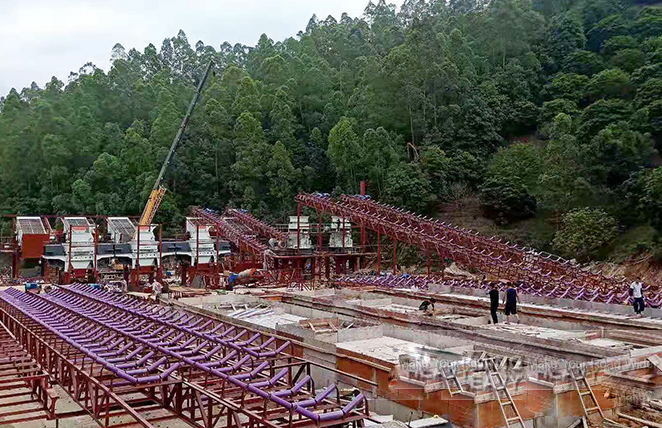The chili grinding process involves several steps to convert dried chili peppers into fine powder or flakes. Here’s a detailed breakdown of the process:
1. Selection & Cleaning
– Sorting: High-quality dried chilies are selected, removing stems, damaged pods, and foreign materials.
– Cleaning: Chilies are washed (if necessary) and dried again to remove dust, dirt, and impurities.
2. Drying (If Not Already Dry)
– Sun-drying or mechanical drying (using hot air dryers) reduces moisture content to below 10% for better grinding.
 3. Pre-Crushing (Optional)
3. Pre-Crushing (Optional)
– Some processes use a coarse crusher or hammer mill to bre chilies into smaller pieces before fine grinding.
chilies into smaller pieces before fine grinding.
4. Grinding
– Primary Grinding:
– A hammer mill or disc mill crushes chilies into coarse flakes/powder.
– Fine Grinding:
– A pulverizer or pin mill grinds the chili into a fine powder (60–100 mesh).
– Cryogenic Grinding (For High Heat-Sensitive Chilies):
– Liquid nitrogen cools chilies before grinding to retain color, flavor, and capsaicin content.
5. Sieving & Separation
– A vibrating sieve or air classifier separates fine powder from larger particles.
– Coarse particles are reground for uniformity.
6. Cooling (If Needed)
– After grinding, chili powder may be cooled to prevent moisture absorption and clumping.
7. Blending & Flavor Enhancement (Optional)
– Additional spices (cumin, garlic, salt) may be mixed for flavored chili blends.
– Anti-caking agents (like silica dioxide) can be added for free-flowing powder.
8. Packaging
– Packed in airtight bags/jars to preserve freshness, color, and aroma.
– Vacuum sealing or nitrogen flushing extends shelf life.
Key Equipment Used:
– Hammer Mill / Disc Mill
– Pulverizer / Pin Mill
– Vibrating Sieve / Air Classifier
– Mixer (for blending)
– Packaging Machine
Factors Affecting Quality:
✔ Moisture content (<10%)
✔ Grinding temperature (avoid overheating to retain flavor & color)
✔ Hygiene & contamination control





Leave a Reply